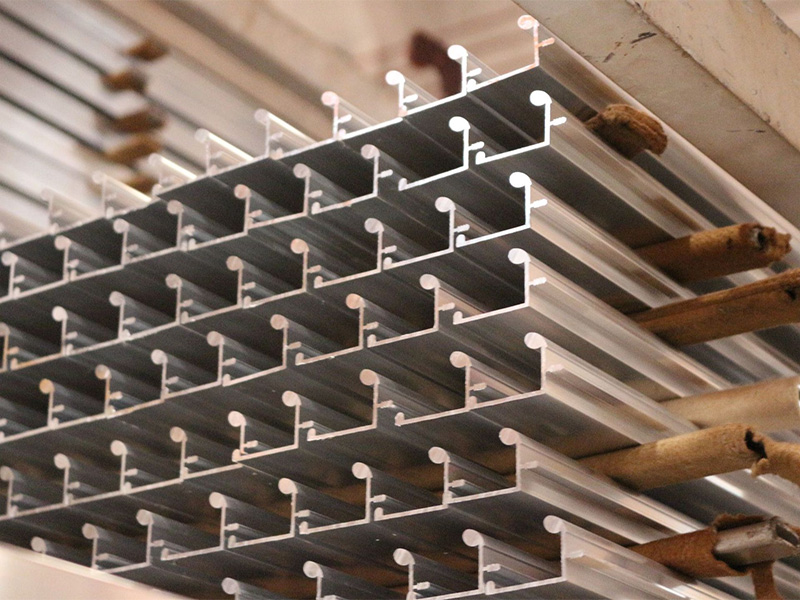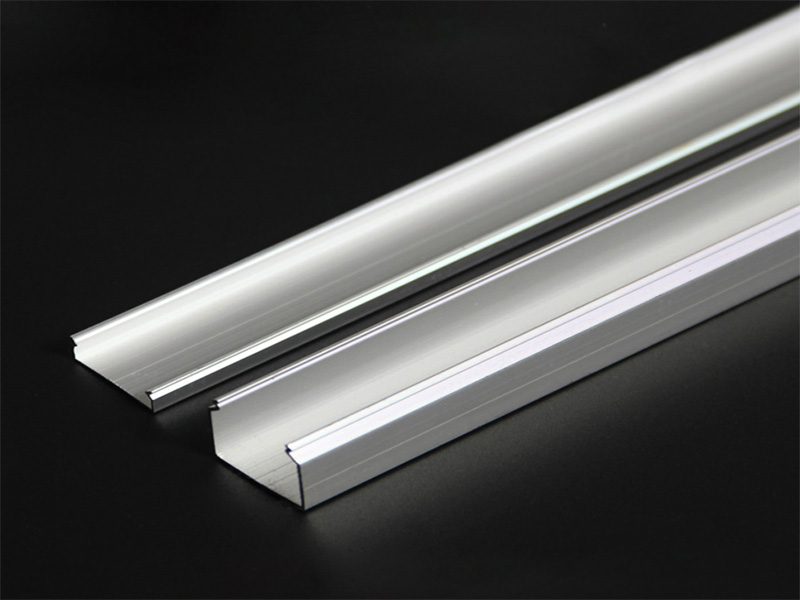

Aluminum extrusion is widely used in construction, automobile and aircraft manufacturing, industrial machinery and consumer goods.
Extrusion is a process for manufacturing fixed section aluminum profiles. By extrusion, very complex sections can be created with excellent strength and surface finish.
The extrusion process of aluminum profile is to force a piece of metal (i.e. billet) through a die with a smaller sectional area than the billet itself.
The extrusion process itself is very similar to the old peloto molding machine. When you squeeze the plasticine through the press, the outflow stream takes the shape of the selected mold. In the same way, extruded aluminum takes the shape of the opening of the die. By using a powerful hydraulic press capable of applying up to 15000 tons of pressure, aluminum can be extruded into any shape you can imagine.
There are two main methods for aluminum extrusion:
direct
indirect

Direct extrusion is the most important and widely used method in aluminum extrusion. In direct extrusion, the die head remains stationary and the aluminum blank is forced through the die with a moving ram.
Direct extrusion is often used to manufacture solid bars, bars and hollow tubes. The mold design can be modified to produce a wide variety of solid and hollow profiles.
In direct extrusion, the blank moves. In indirect extrusion, the aluminum blank remains stationary, and the moving die of the stamping part exerts pressure on the stationary blank. The advantage of keeping the blank stationary is to keep friction to a minimum.
Design the section shape before extrusion. The shape and characteristics of the extruded metal are carefully calculated to maximize function, facilitate assembly, reduce weight, and minimize processing costs. The unique characteristics of aluminum make it a cost-effective product with excellent functionality and excellent finish.
Cast the mold according to the cross section of the desired shape.
The billet is heated in the furnace until it reaches 750-925 º F. At this point, aluminum becomes a soft solid.
The application of lubrication on billets and stampings is known as smut. Black yarn is essential because it ensures that the billet and the hammer do not stick together.
The ram exerts pressure on the blank and pushes it through the die. In this process, liquid nitrogen is used to cool the mold. Cooling can prevent the formation of unwanted oxides and extend the length of the mold.
The extruded aluminum profile appears from the die and has the same shape as the die opening. The extrusion is pulled onto the cooling table and exposed to air, water or a mixture of both (depending on the final mechanical requirements of the metal).
Then use a stretcher. This corrects any possible distortion and straightens the metal. The hardness and strength are improved in the process of drawing.
These extrusions – which may be 50 meters long – are sent to the saw conveyor belt and cut to the desired profile using a circular saw.
For some aluminum alloys, artificial aging is used to obtain the best strength. Artificial aging is realized by precipitation heat treatment in aging furnace. The aging process ensures that fine particles are uniformly precipitated through aluminum to improve strength, hardness and elasticity.
Finally, the finished profile is taken to be finished or fabricated and ready for delivery to the customer.

Compared with other metals, extruded aluminum has many advantages. Some metals can match some of the advantages of aluminum, but no one metal can have all of these advantages at the same time.
There are many benefits of aluminum profiles, including:
Lightweight. Aluminum weighs about one-third as much as iron, steel, copper, or brass. This makes it easier to handle and more economical to transport. Therefore, aluminum is widely used in automotive design, aerospace and high-rise buildings.
Strong. Aluminum is strong enough to meet all but the most demanding applications. Aluminum is ideal for cold environments because it becomes stronger as the temperature decreases.
Corrosion resistance. Aluminum does not rust. Its surface is protected by an oxide film, which can be enhanced by anodic oxidation.
Excellent thermal conductivity. Aluminum is more heat-resistant than most metals. This makes it an ideal choice for heat exchanger operation. Extrusion can be used to produce shapes that are most suitable for heat conduction.
Affordable. Extrusion process is relatively cheap. Even prototypes can be made at a reasonable cost.

For Further Details,Please Feel Free To Contact Us: